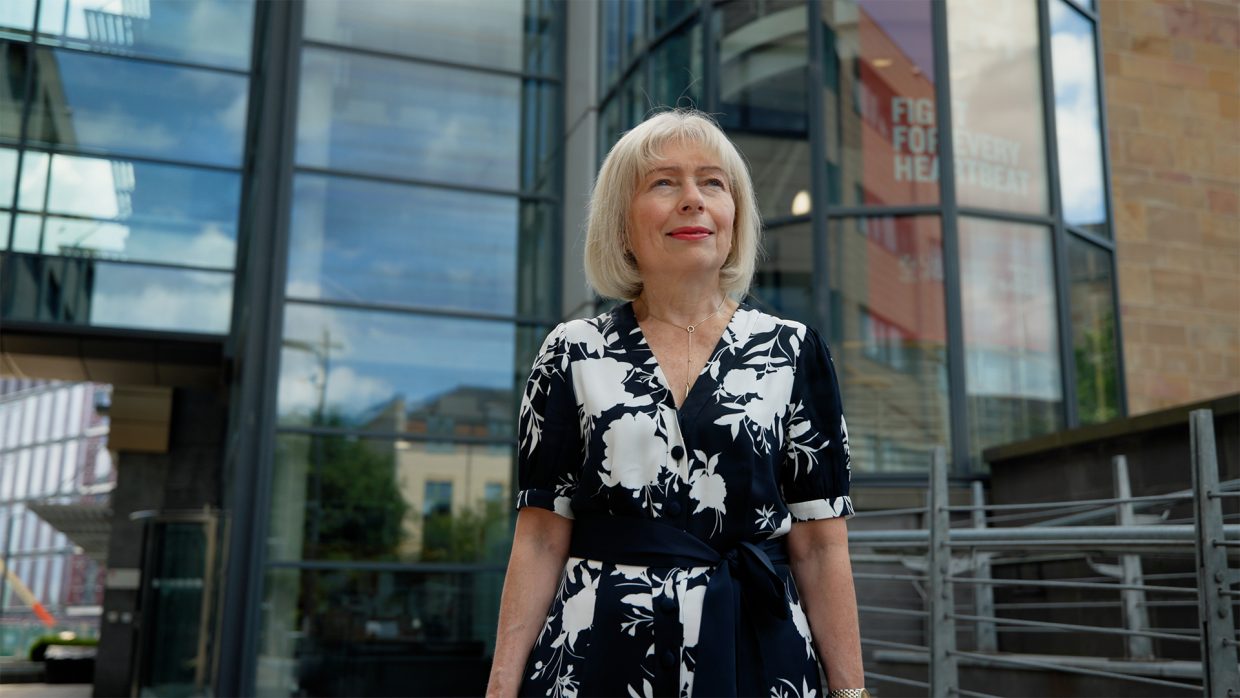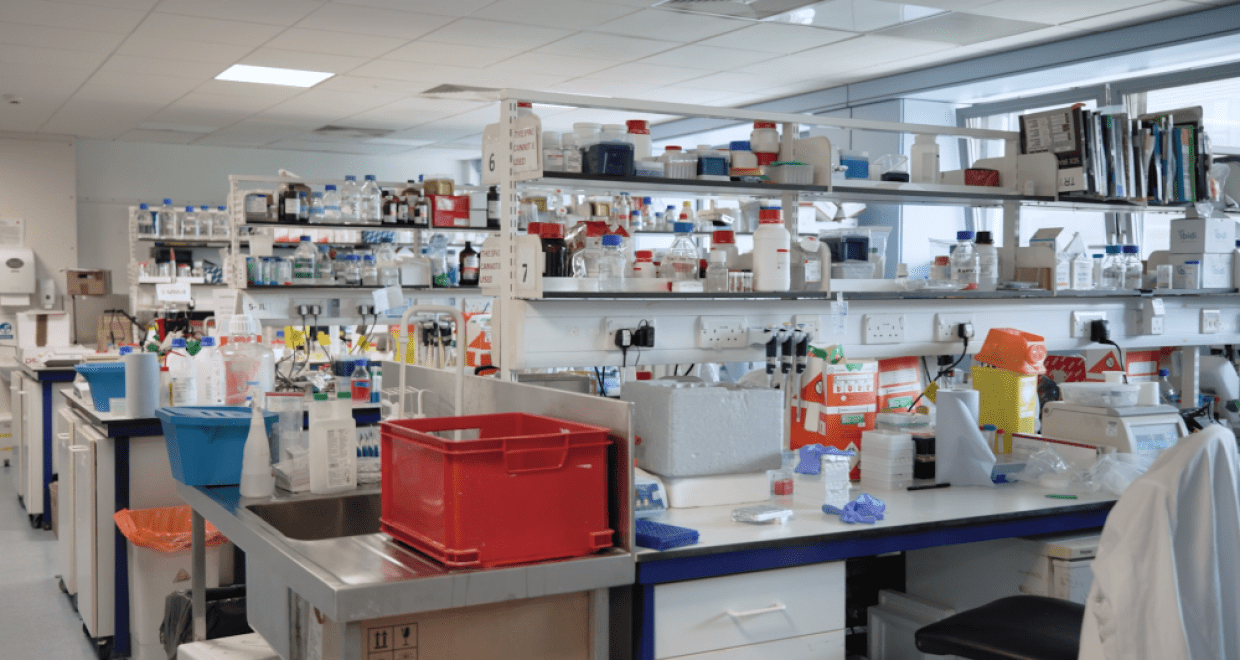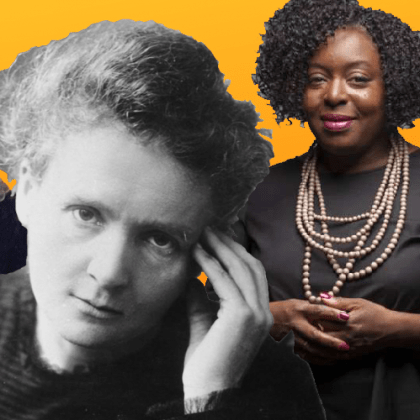From ‘generation zero’ to a trailblazer in medicine
Dame Anna Dominiczak, the first female chief scientist for health in Scotland and Editor-in-Chief of the new Cambridge Prisms: Precision Medicine journal, details her stellar achievements since her move from Gdansk to Glasgow 40 years ago

Poland in the early 1980s was a tough place.
Against a backdrop of economic recession, strikes and political turmoil, martial law was imposed in 1981. Lessons were suspended, and teachers and professors were removed from their posts.
Born to two professors of medicine, Anna Dominiczak planned a career as a geographer – inspired by a school teacher. However, her mother ‘manipulated things a little’ and persuaded the teacher to convince Anna to study medicine – something that was ‘inevitable’ but ‘probably the right thing’.
Having graduated from Gdansk Medical University Anna moved to Malta, where her husband Marek had been invited to set up a biochemistry laboratory. Shortly after, martial law was declared back at home – so they moved to the UK ‘to become internationally competitive clinician scientists’. ‘It was a big move, but we hoped for the best,’ Dame Anna recalls.
New horizons
Glasgow was ‘wonderful, inviting and welcoming’ to the young couple – even if their arrival was met with pouring rain. Dame Anna says the medical profession in Glasgow was hugely male-dominated – in stark contrast to Poland: ‘There was one woman professor in the medical faculty of the University of Glasgow, and one female consultant in my training hospital. It was absolutely striking.’
After a succession of impressive appointments and posts within Glasgow University, in 2010 Dame Anna became Regius Professor of Medicine – the first woman to hold the post. This month (September 2022) Dame Anna was appointed Chief Scientist (Health) for the Scottish Government – again, the first woman in the role. It’s no surprise that Professional Heart Daily described her as ‘a bona fide trailblazer in cardiovascular science and medicine’.
Precision medicine
Dame Anna is now a world leader in precision medicine, which she defines as ’using modern molecular information gathered by decades of research to stratify patients within the old categories we called diseases.’ She confidently predicts it will be ‘the medicine of the future’.
She explains: ‘These molecular categories allow earlier diagnosis, better understanding, better treatment. It is the right treatment for the right patient at the right time, but in a much broader way than just thinking about drugs and prescribing. Early interventions are forms of precision medicine that will be transformative. I have also been engaged in pharmacogenomics, where it is possible to predict adverse reactions to drugs before they are prescribed.’
“There have been major achievements with cancers being stratified molecularly – mostly using genomic sequencing, with treatments based on this stratification. Cardiovascular and metabolic diseases are not far behind.
Dame Anna was instrumental in bringing research facilities to the the Queen Elizabeth University Hospital campus in Glasgow – including the Clinical Innovation Zone, housing precision medicine-focused companies and research initiatives. It is this ‘triple helix’ approach advocated by Dame Anna – comprising the health service, industry and academia – that is crucial. She believes her approach will save huge amounts of money.
She explains: ‘There is a real opportunity for economic gain. If we prevent adverse reactions, we’ll save money. Early diagnosis is cheaper than late diagnosis. But innovation in healthcare needs industry involvement to work. If we bring industry really close in that triple helix, there will be economic growth and job creation.’
Cambridge calling

Dame Anna has recently been appointed editor-in-chief of Cambridge Prisms: Precision Medicine – a new open-access journal aimed at transcending traditional subject siloes and building an interdisciplinary community around precision medicine – and reports that she was ‘honoured and delighted’ at the appointment: ‘We have assembled an international and diverse editorial board, including industry representatives – and not just established companies. The ‘triple helix’ will be crucial to the success of the journal – despite a potential clash of cultures between the ‘common good’ of academia and the profit motives of industry.
She explains: ’It takes time to understand the different cultures. In my experience, industry works better with academia than with the health service or other public services. Academia, with its appetite for innovation, can provide a ‘glue’ between entrepreneurs and the public services. It’s important that we bring the community together – those contributing to the journal and those reading it.’
Family matters
Dame Anna described moving to Glasgow with her husband Marek as ‘the best thing we’ve ever done’ – partly because it allowed her to step out of her parent’s shadows: ‘In a way I stopped being my mother and father’s daughter and worked on my own terms. If you follow your parents you are always that ‘second generation’ and you will never know what you achieved independently. I have a colleague in the United States but who moved there from Asia, and he refers to us as being part of Generation Zero. If you are part of Generation Zero you only have yourself to rely on!’ Despite this, Dame Anna says she would love her two beloved grandchildren to pursue a career in science: ‘That would make me extremely happy, but they will have to be prepared for hard work, determination, a deep interest in their subject, and a huge amount of teamwork. Medicine and research are both team sports.’





